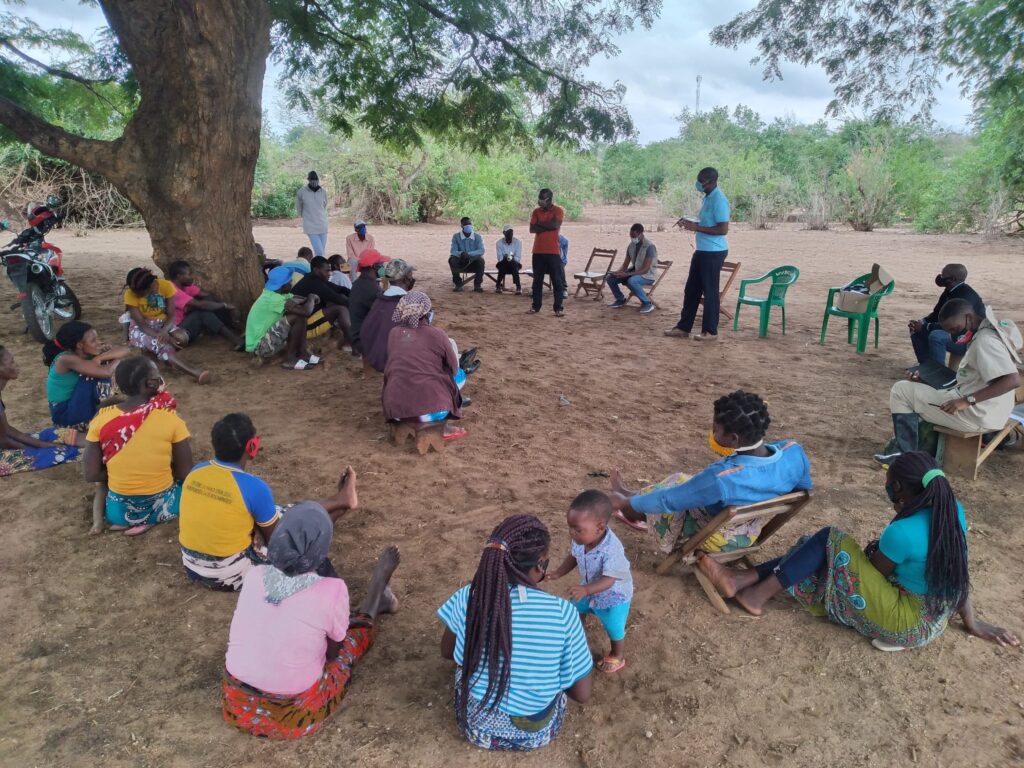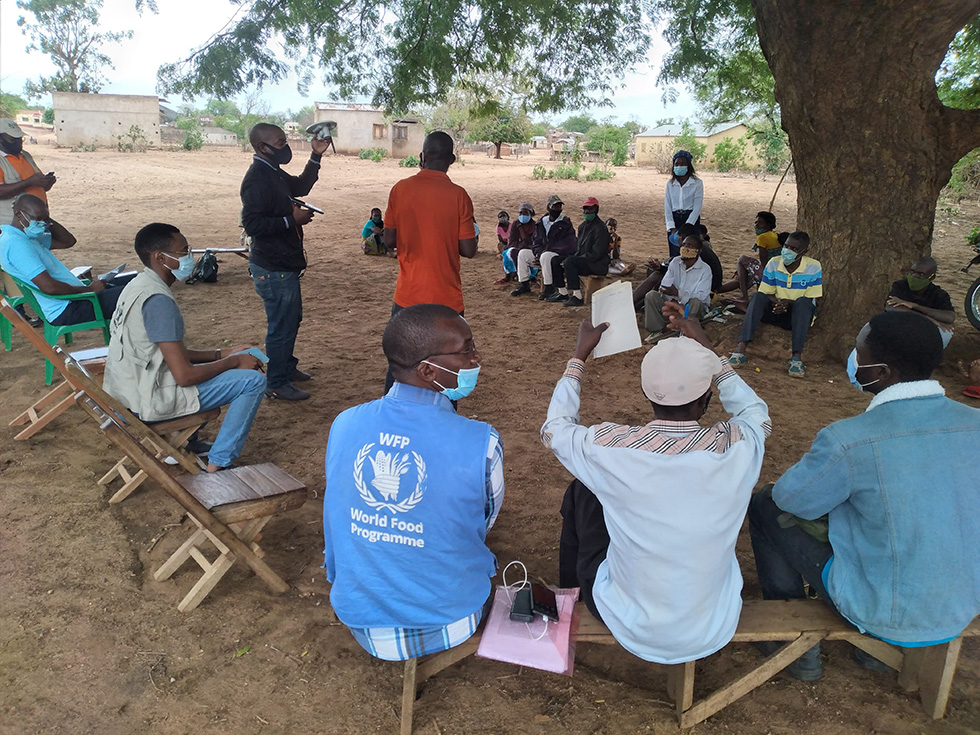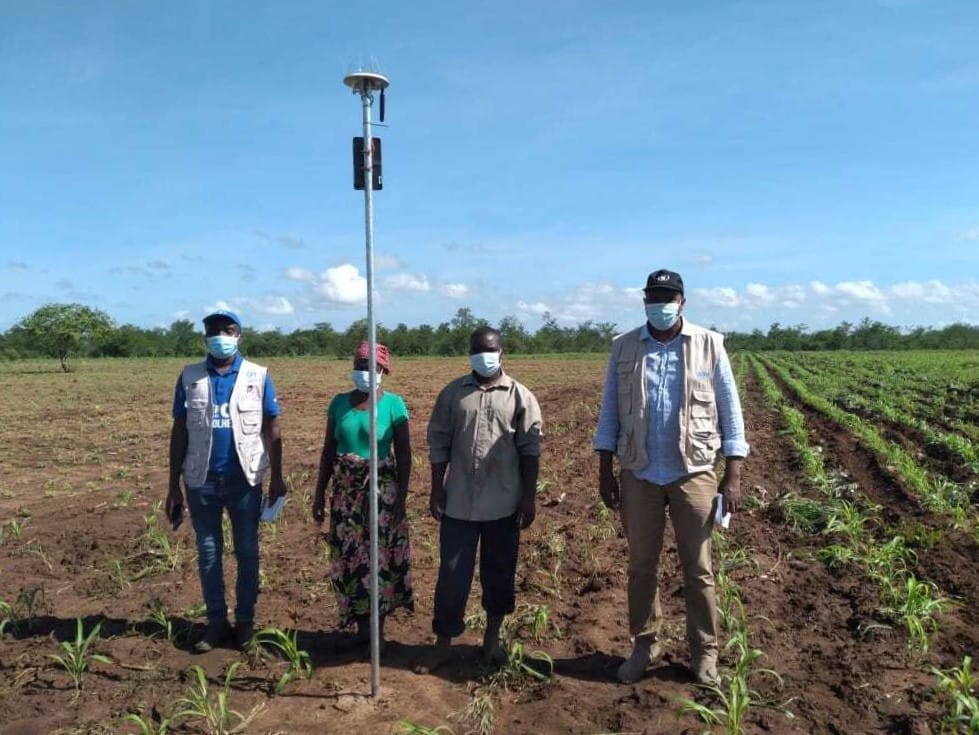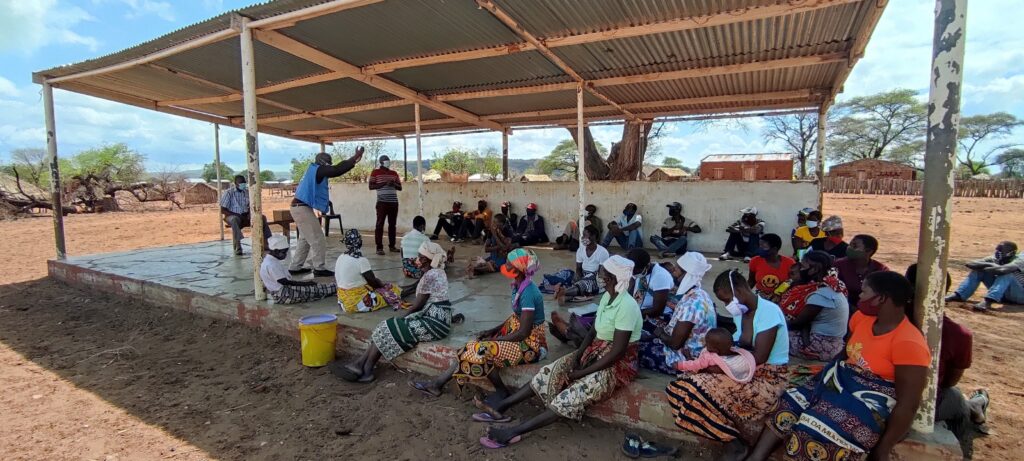- EN
- PT
Partnering with the World Food Programme to Improve Crop Yields—and Lives—in Mozambique
Climate change is tangible in Mozambique. Intense storms increasingly bring flooding during the rainy growing season, followed by a dry season of severe and prolonged drought. This keeps the nation’s smallholder farmers, mostly women who work small rainfed mixed-crop plots, stuck in a reactive state as they try to feed their families. In 2019, Mozambique was the country most affected by extreme weather events worldwide. According to the World Food Programme (WFP), severe weather threatens the security and nutrition of 70% of the population that relies on agricultural production for food and livelihood and 25% of the nation’s economy.
In response, WFP implemented its R4 Rural Resilience Initiative, a program that enables vulnerable rural families to increase their food and income security by managing climate-related risks. This initiative begins and ends at the community level, with farmers directly involved. The goal in Mozambique is to foster an ecosystem of resilience to give smallholders agency over their livelihoods.
Leveling Up: A Plan for Weather Data
With R4 objectives in mind, Arable applied to the 2021 WFP Innovation Accelerator, an incubator for start-ups working to solve world hunger in creative ways. Arable outlined a plan to leverage granular in-field precipitation data as a tool to increase yield and mitigate climate risk.
Farmers in Mozambique previously had access to remote weather information, but precipitation is highly variable, and weather stations were located in capital cities—miles away from rural farms. Field-level data augments existing readings and leads to better agronomic decisions and outcomes, and it can also bolster weather-indexed insurance plans and fortify microfinance products. Arable was chosen from more than 200 applicants to advance to the next round: a two-week boot camp to hone the proposal.

The boot camp was highly collaborative, and since it was held remotely due to the pandemic, larger, inclusive teams traversed expertise and time zones. Arable brainstormed with WFP specialists in agriculture, finance, and development, including Pedro Chilambe, Integrated Climate Risk Management Project Coordinator in Mozambique. This experience provided deep insight into the issues growers face on a daily basis—information critical to the creation of a nature-based solution that would be relevant to rural smallholders. At the end of the session, Arable was awarded an R4 grant to bring the project to life.
“Bringing government, experts and decision-makers to the table to address climate shocks by using in-field data as a tool to build resilience within local ecosystems—this is why we started Arable,” says Jess Bollinger, VP Sales & Business Development, who has been with the company since its inception and initiated entry into the WFP accelerator.
“Bringing government, experts and decision-makers to the table to address climate shocks by using in-field data as a tool to build resilience within local ecosystems—this is why we started Arable.”
JESS BOLLINGER, VP SALES & BUSINESS DEVELOPMENT, ARABLE
The Implementation: Melding New Technologies With Generational Wisdom
As part of a larger effort run by Chilambe that touches the lives of 13,100 farmers in arid and semi-arid provinces Tete, Gaza, and Sofala, the pilot brought 30 Arable Mark devices to fields managed by 2,000 farmers in the Changara district of Tete. However, before pushing the “on” buttons, the team needed to gain trust and credibility with rural farmers.
In the countryside, traditional farming techniques pass from person to person, generation after generation, based on observations, anecdotes, and lived experience. This is where the team started, led by Chilambe in Mozambique and Arable’s LATAM Partnerships Manager Walter Jove in the U.S. Gathering at farm clubs, they interviewed 400 growers to determine how they made agricultural decisions in relation to weather and what they needed to succeed. They also spoke with 18 intermediaries and agronomic advisors who help farmers decide when, where, and what to plant and harvest.
The next step was to introduce the Mark device to growers and find ways to meld old technologies with new ones. As farmers passed the lightweight device around, Chilambe and Guilherme Martins, Arable Customer Support Senior Associate in Piracicaba, led sessions in Portuguese. They explained how the sensors work, how it fits into the climate services component of R4, and why it’s important to gather rainfall information over time at the field level. When it came time to discuss installation, the farmers took the lead and decided whose fields would host the devices and how they would like to receive the data.

“The whole process was collaborative and energizing,” says Jove. “We learned firsthand from the farmers what they need to trust our sensors and were able to tailor tools for them. There’s a lot of opportunity in Mozambique to improve agricultural practices and the livelihoods of smallholder farmers, so it’s important to listen closely to what these growers need in the field.”
The Launch: Augmenting Established Channels
Before the pilot launched, the Instituto Nacional de Meteorologia (INAM) had already started to provide forecasts downscaled to the district level and the University of Reading issued climate bulletins. Information was disseminated via text messages, WhatsApp group chats, community radio broadcasts, and conversations at farm clubs. Intermediaries helped growers, who often had little or no formal education, interpret and analyze historical rainfall data and then use it to make agricultural decisions.
Leaning into these established channels, Arable partnered with INAM and the university to process in-field data for accuracy, an exchange of information valued by all involved. The team also started work on a new iteration of the climate bulletins—a streamlined SMS interface to bring hyperlocal precipitation data from the farmer’s field to their phone.
Over the course of five months, the pilot provided a deeper view into weather and field dynamics for rainfed crops. Accurate start and stop times for the growing season were recorded along with details on the extreme precipitation events that have become the new normal on farms across the area.
The Next Phase: Looking Into The Future
The project has been extended with a second pilot to launch during the dry season. This next phase brings Arable to smallholders working in irrigated fields and covers a wider crop mix. The new SMS tool will be integral. Farmers will receive texts with hourly precipitation and temperature data, readings from the day before, and a forecast for the next day. Working with agronomic intermediaries, they will leverage the information to time irrigation, save resources, and increase yields.

Data-driven innovation will start on the market side as well. Instead of relying on manual measurements from pluviometers or distant gridded weather reports, insurance payouts triggered by precipitation metrics straight from the field are in the works. Clearly defined indexes will streamline the process and make it more clear to farmers.
“The climate services component of R4 has become the glue between the different components because it allows INAM to better monitor meteorological circumstances and creates a platform and a comparative basis for the microinsurance product to thrive,” says Chilambe. “It’s very important to guarantee that this product is being distributed and is being paid out fairly to farmers.”
“The climate services component of R4 has become the glue between the different components because it allows INAM to better monitor meteorological circumstances and creates a platform and a comparative basis for the microinsurance product to thrive.”
PEDRO CHILAMBE, INTEGRATED CLIMATE RISK MANAGEMENT PROJECT COORDINATOR, WORLD FOOD PROGRAMME
Additional microfinance products on the horizon include savings and loan reserves pooled at the village level to provide growers with interest-based dividends that they can reinvest. And once farmers achieve a certain amount of resilience, they will be able to obtain microcredit to gain access to markets where they can sell a surplus.
The larger benefit, however, is living in a community that’s able to adapt, survive and hopefully even thrive in an ever-changing climate. While the pilots represent the first step, WFP’s R4 project in Mozambique is funded through 2025. The next phases of the project may fold additional in-field metrics into the SMS interface or the installation of more Mark devices in nearby communities. With accurate data, the possibilities seem endless—and we are just getting started.
